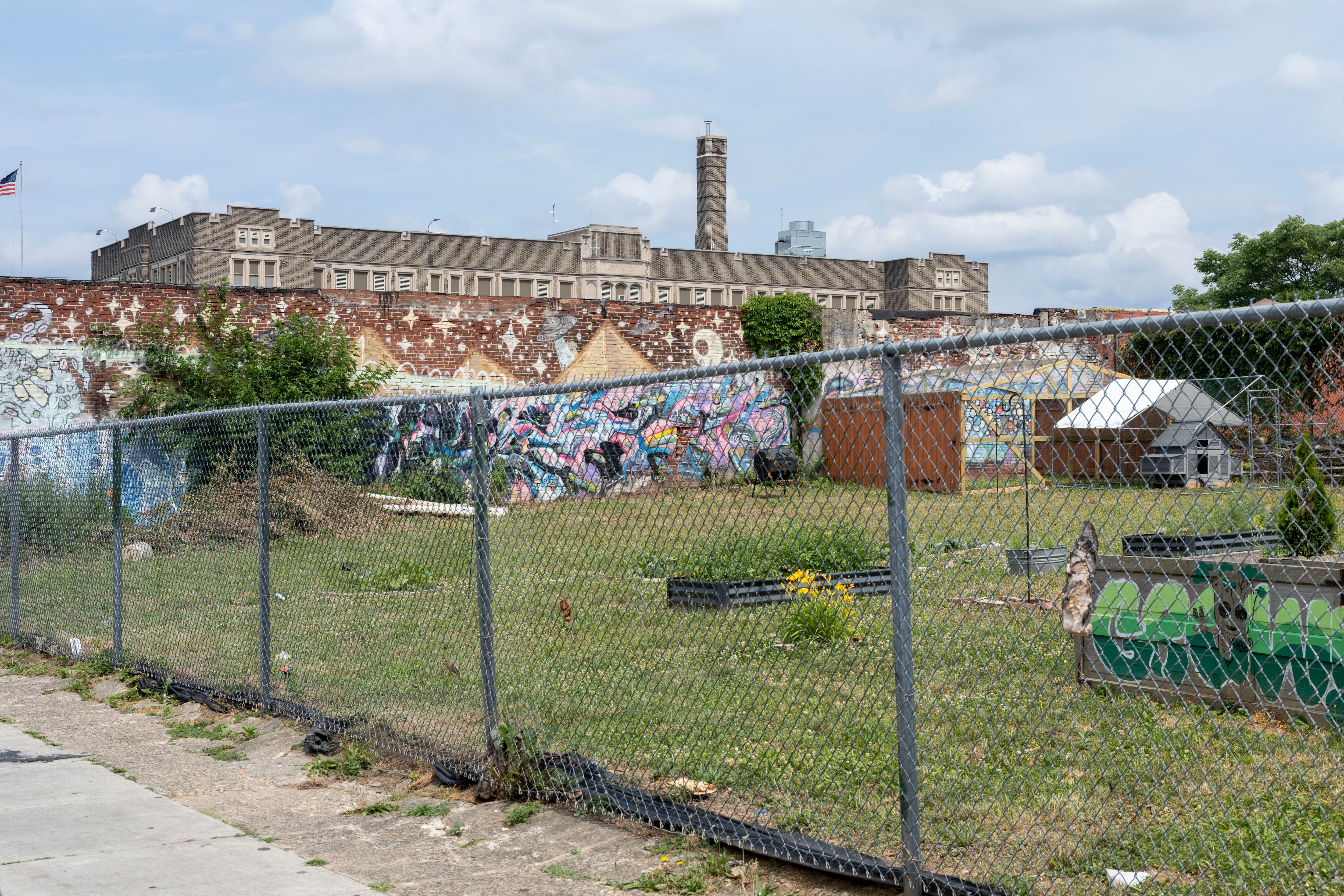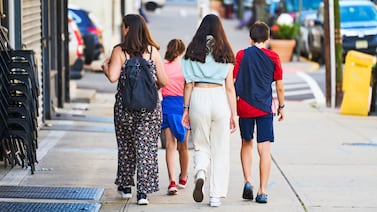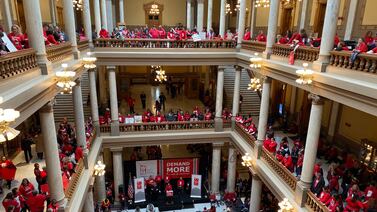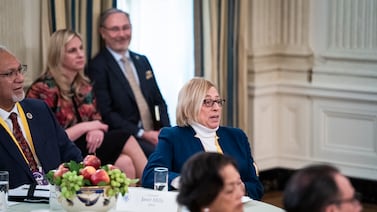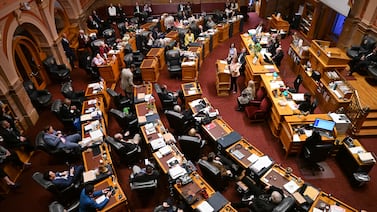This story was published in partnership with The Trace, a nonprofit newsroom covering gun violence in America. Sign up for its newsletters here.
Russell Conwell Middle School is housed in a 98-year-old building in Philadelphia’s Kensington neighborhood. The school’s brick walls and locked metal front doors serve as a fortress for its 176 fifth- through eighth-grade students, who are being educated in one of the city’s most dangerous areas.
On a recent day, a few minutes before Conwell’s 2:30 p.m. dismissal time, a handful of Philadelphia Police Department cars swarmed Jasper Street, which borders the school. Officers walked up and down the street peering into the windows of parked cars as students started leaving the school yard. The officers refused to say what they were investigating, but confirmed that it did not involve the school.
Community violence, including gunfire, is often so close that it can be heard from classrooms, said Katoura Jones, 12, a Conwell sixth grader. “When I hear gunshots my anxieties start,” she said, standing outside the school building at dismissal.
On a daily basis, such crime and confusion play out on the streets that border Conwell, a magnet school that draws students from across the city. In May, Philadelphia Mayor Cherelle Parker ordered the city to remove encampments erected there by unhoused people and those with addictions. While Parker declared the initial cleanup a success, many who were displaced moved to nearby sidewalks, including those adjacent to the school.
The urban dysfunction swirling around Conwell has resulted in its having a national distinction: the school with the most shootings near its building during the last ten years — 386. Using the Gun Violence Archive, The Trace analyzed shootings within 500 yards of schools nationwide from 2014 through 2023 and found that five of the top 10 schools were in the School District of Philadelphia.
The five Philadelphia schools among the nation’s 10 nearest to the most gunfire are all in Kensington, home to one of the nation’s largest open-air drug markets and homeless populations. They are the extremes, and even schools significantly further down the list are located near regular bursts of gunfire.
“I’ve often said that Kensington is extremely violent, and is probably one of the most violent pockets in America,” Philadelphia Police Commissioner Kevin Bethel said, referring to the area as the “opioid corridor,” during an interview with The Trace.
A week later, on June 10, Bethel announced that 75 officers recently graduated from the Police Academy would soon be deployed to Kensington as part of Parker’s recent public safety plan.
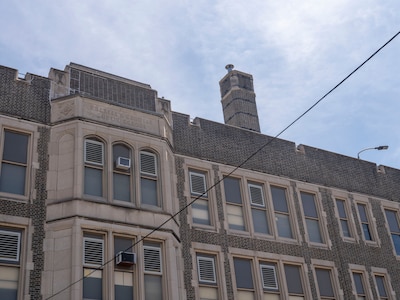
“I’ve watched what has happened to our children down there. Our kids cannot play in that area,” Bethel said during the news conference at police headquarters. “Our kids cannot walk to school down there.”
Then, he commented on this story. “There was a report by The Trace ... that Conwell Middle School and Willard (Elementary School) … are No. 1 and No. 3 in the nation with having the highest level of shootings around their schools,” he said. “Ladies and gentlemen, that’s absolutely unacceptable.”
The violence takes a toll on these schools in ways both sudden and gradual. Bethel, who oversaw school district security from 2019 until he became police commissioner, noted that Conwell’s once 800-plus student body has dwindled to a quarter of its size, while at Frances E. Willard Elementary School, just two blocks away from Conwell, the city had to put “bulletproof blankets” across the windows to keep kids safe.
Despite the danger level in these school communities, the vast majority of the gun violence does not take place directly on school property. Still, the gunfire is too close for comfort, said Katoura, the Conwell sixth grader, during an interview alongside her mother, Mary Speight.
“Sometimes, when I’m in my tutoring class I hear gunshots going off, and I’m the closest one to the window because that’s where I sit,” Katoura said. “They tell us to get down, but that’s when all we hear is screaming and yelling. That happens pretty often.”
Speight shook her head. “They don’t send nothing home,” she said. “That’s why me and my son walk her to school, and we make sure we come and get her,” she added, as Conwell Climate Manager James Washington approached and attempted to stop the interview. Principal Erica Green then showed up, asking that the interview be conducted across the street.
Green said she was too busy to speak to a reporter at dismissal time, but said she would do so later by phone. Attempts to reach her were not successful.
“They’re very overprotective of the kids,” Speight said, after observing the interaction. “I do want them to keep my child safe and the other children safe.”
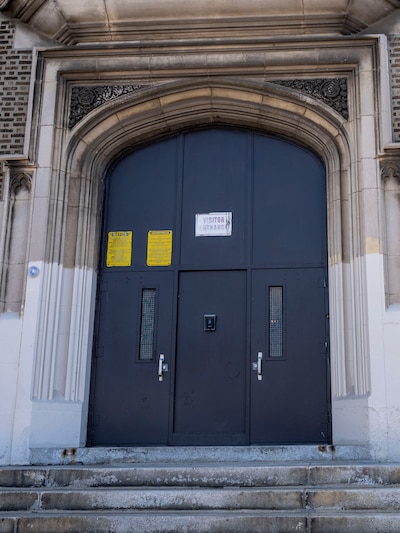
Ann Santiago was parked in front of Conwell waiting to pick up her son, Adrian, 12. While she said she was aware that the neighborhood was troubled, she did not know that Conwell held the national distinction of being the school closest to the most gunfire since 2014.
“Scary,” she said, softly. “It’s not the school’s fault, basically it’s the neighborhood itself. I used to live around here many, many years ago, and it wasn’t like this. Kensington was very popular with a lot of stores and you would never see zombies,” she said, referring to the drug users nodding off between injections.
Santiago said that, despite the surrounding environment, she’s pleased with the education her son, who has autism, is receiving and the security measures that are in place. “I first thought that the security program was overwhelming and too much — you have to wait outside until they bring your kid out!” she said. “But now I actually do like that.”
Ricardo Ruiz, whose son Justin is a Conwell sixth grader, said he was satisfied with the school and its security measures. “It’s a good school. They take care of the kids, they do what they got to do,” he said, noting that the doors are locked. “But I wish they had more police officers around, that would work.”
In May and June of 2023, Conwell was chosen to host two hearings of the Philadelphia City Council’s Public Safety Committee because the school “is in the heart of Kensington and the opioid crisis,” Principal Green said in a message posted on the school’s website.
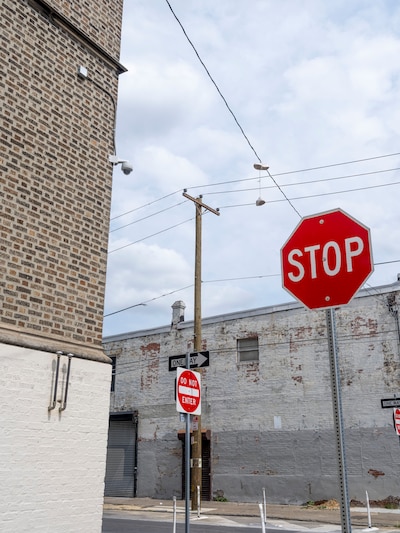
At those hearings, Councilmember Quetzy Lozada, whose 7th District includes Kensington, discussed her proposal to create a Marshall Stabilization and Recovery Plan to combat blight, crime, and drug abuse in Kensington and the surrounding area, named after the U.S. plan to rebuild Europe after World War II. Her resolution noted that in 2022, 22 percent of all city homicides and 25 percent of all shootings took place in Kensington.
This February, Lozada joined three other Kensington councilmembers to form the Kensington Caucus to work on solving systemic problems. And in April, Mayor Parker signed a bill sponsored by Lozada that imposes a curfew on Kensington businesses without liquor licenses.
Meanwhile, Bethel said the city’s infusion of additional officers to the high-crime area last year has helped reduce shootings and homicides by double digits. With the arrival of 75 additional officers, that positive trend should continue, he said, noting that restoring law and order in Kensington will take time. “I do not believe that overnight we’re going to take care of an issue that has been there for decades,” he said.
After viewing The Trace’s school shooting data, Lozada said she’s visited all five schools in the top 10 and maintains “an open line of communication with each principal.” She added that her initiative created a “24-hour cleaning pilot around each school” to remove needles and waste from students’ paths. “No child should have to grow up in these conditions.”

